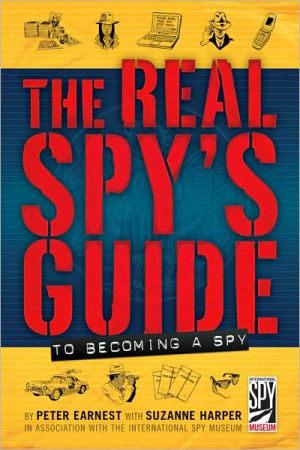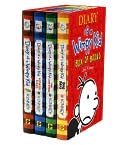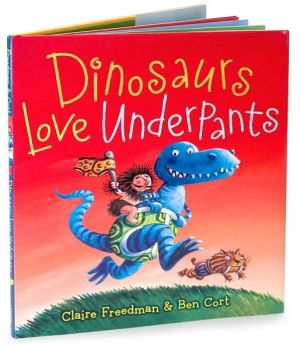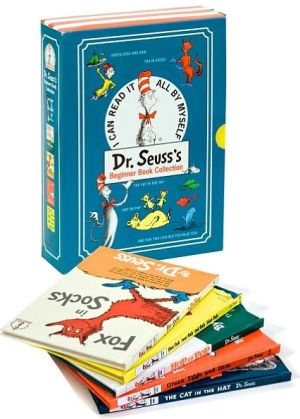Real Spy's Guide to Becoming a Spy
Created by the founding executive director of the International Spy Museum, who is also a former operative in the CIA’s Clandestine Service, this is the official handbook for kids who dream of one day becoming a spy or working in the intelligence field.\ \ Have you ever wondered what spies really do. What kind of training is involved? Do you have to go to a special school or take a polygraph test? How do you live your “cover”? How does your work life affect your relationships with your...
Search in google:
Created by the founding executive director of the International Spy Museum, who is also a former operative in the CIA’s Clandestine Service, this is the official handbook for kids who dream of one day becoming a spy or working in the intelligence field. Have you ever wondered what spies really do. What kind of training is involved? Do you have to go to a special school or take a polygraph test? How do you live your “cover”? How does your work life affect your relationships with your friends and family? Is there danger involved? This fascinating, fact-filled book answers these questions and more while providing a historical timeline, definitions of key terms, suggestions for further reading, an index, quizzes, and exercises to see if you have the right spy stuff. F&P level: VPublishers WeeklyThis collaboration between Earnest, a former CIA operations officer (now founder/director of the International Spy Museum) and author Harper explores the history (and the future) of spying, as well as spy myth busting, the basics of the job and the ways kids can hone their skills. “Spy Speak” boxes provide definitions of the vocabulary used by spies, while quizzes and a chart about “the intelligence cycle” offer additional diversions. Those with active imaginations will appreciate sections like “How to Create a Cover,” and aspiring Bonds will value the advice. Ages 8–up. (Oct.)
\ Publishers WeeklyThis collaboration between Earnest, a former CIA operations officer (now founder/director of the International Spy Museum) and author Harper explores the history (and the future) of spying, as well as spy myth busting, the basics of the job and the ways kids can hone their skills. “Spy Speak” boxes provide definitions of the vocabulary used by spies, while quizzes and a chart about “the intelligence cycle” offer additional diversions. Those with active imaginations will appreciate sections like “How to Create a Cover,” and aspiring Bonds will value the advice. Ages 8–up. (Oct.)\ \ \ \ \ Matthew LukachCalling all readers who have ever dreamed of working in the exotic and clandestine world of international espionage. The Real Spy's Guide to Becoming a Spy is about as authentic as it gets: co-written by Peter Earnest, a former CIA operations officer and founder of the International Spy Museum in Washington DC, this helpful book paints an enticing picture of what it means, and what it takes, to be a spy. Learn the professional lingo, try your hand at cracking codes, and figure out how to spot a bugged phone and hidden cameras. Reviewer: Matthew Lukach\ \ \ VOYAThe title says it all: this handbook is for those readers who wish to become secret agents as adults. It offers very practical advice to teens who dream of spying. The authors explain why spies are necessary to the running of nations; what a spy really is (i.e. not James Bond); what spies truly do, including, sometimes, deskwork; and how to become a spy, including what courses to take in college. An entire chapter is devoted to ways of practicing spying skills right now. Future spies are encouraged to learn about the world by keeping up with the news, improving their writing, learning a foreign language, and practicing their social skills. The appendixes offer more information spy-wannabes can use to research their chosen profession. There are Web sites for all eight Department of Defense Intelligence Agencies as well as a list of books and other useful online resources. This title appears to be aimed at a young middle-school crowd. The layout is snappy with a black, white, and red color scheme, lots of bullet points, and many cartoon drawings. The exuberant appearance belies the wealth of information presented here. The book aptly uncovers the myth versus the reality of spying and will be a hit with those who have an active imagination and are intrigued by the idea of being an undercover agent. Reviewer: Geri Diorio\ \ \ \ \ Children's LiteraturePeter Earnest is a former CIA operative and currently serves as the Executive Director of the International Spy Museum in Washington DC. As such he has actual experiences in the field of espionage and intelligence gathering that help make this book one that will capture the attention of its readers. In this work, readers are given a look behind the curtain that generally shrouds the real work that spying entails. As the authors note, spying is unlike what movie goers see in 007 films. Instead, it involves a careful attention to detail, resourcefulness, undercover actions, a sense of secrecy, and any number of other traits. Spies generally work in other countries in actual jobs while also undertaking their clandestine activities. In this book readers are allowed to see the personal qualities and survival skills that are part and parcel of working in the intelligence field. Throughout the text the authors spice the narrative with actual spy scenarios, vocabulary from the world of espionage, and opportunities for readers to gauge their personal skills as related to potential work in this field. Of particular interest are sections of the text that connect day-to-day activities with potential employment in the spy world. Skills such as using pneumonic devices, presentation talents, identifying behaviors linked to lying, and conversation skills all are presented in an interesting manner. As a result The Real Spy's Guide is an engaging and informative book that will appeal to readers with any sort of interest in mystery and the world of spies. Reviewer: Greg M. Romaneck\ \ \ \ \ VOYAThe content of the book is certainly written in an engaging manner and could appeal to a young adult audience; however, the visual presentation of the book is essentially belittling. Children need cartoon characters and thought bubbles to have a concept explained to them; teenagers do not. Had the content been presented in a more conventional and straightforward manner, the book would be more appealing to an older audience. Reviewer: Lucy Freeman, Teen Reviewer\ \ \ \ \ School Library JournalGr 4–8—In this manual for would-be secret agents, Earnest gives an overview of a spy's life, jargon needed for the position, tips and tactics for honing surveillance skills, and some true life stories. Activities help readers practice writing code and "learn to describe someone in ten seconds." Occasional pen-and-ink illustrations, numerous sidebars, and bulleted items enliven the presentation. Overall, the book is a fun read and most enticing to readers with an interest in intelligence gathering. Although it's not a comprehensive resource, it is one to add to collections that offer multiple perspectives on a subject.—Richard J. Snyder, Inglewood Junior High School, Sammamish, WA\ \ \ \ \ Kirkus ReviewsBeing an ex-CIA agent and also Executive Director of the International Spy Museum in Washington, Earnest carries promising credentials-but his career manual for would-be spies is a big yawn. Illustrated with drably impersonal line drawings of people in trench coats and largely devoid of actual examples, his narrative offers a generic view of what spies do, followed by comments on personal qualities that make good spy material and vague allusions to how CIA agents are trained (industrial espionage rates only a single brief mention). He then moves on to obvious advice about how field agents might enlist human "assets," get rid of a tail, present security reports to bosses and like spy-ish activities. Frequent "Spy Speak" boxes define special terms that are, mostly, already defined in nearby text. Readers with a serious yen to be intelligence agents will get more insight and information from the likes of Claudia B. Manley's Secret Agents: Life as a Professional Spy (2001), Kate Walker and Elaine Argaet's So You Want To Be a Spy (2004) or Richard Platt's Spy in the Eyewitness series (revised edition, 2009). (Nonfiction. 10-12)\ \



![Tickle Monster Laughter Kit [With Tickle Mitts] Tickle Monster Laughter Kit [With Tickle Mitts]](/application/data/covers/98/35/9781932319835.jpg)




